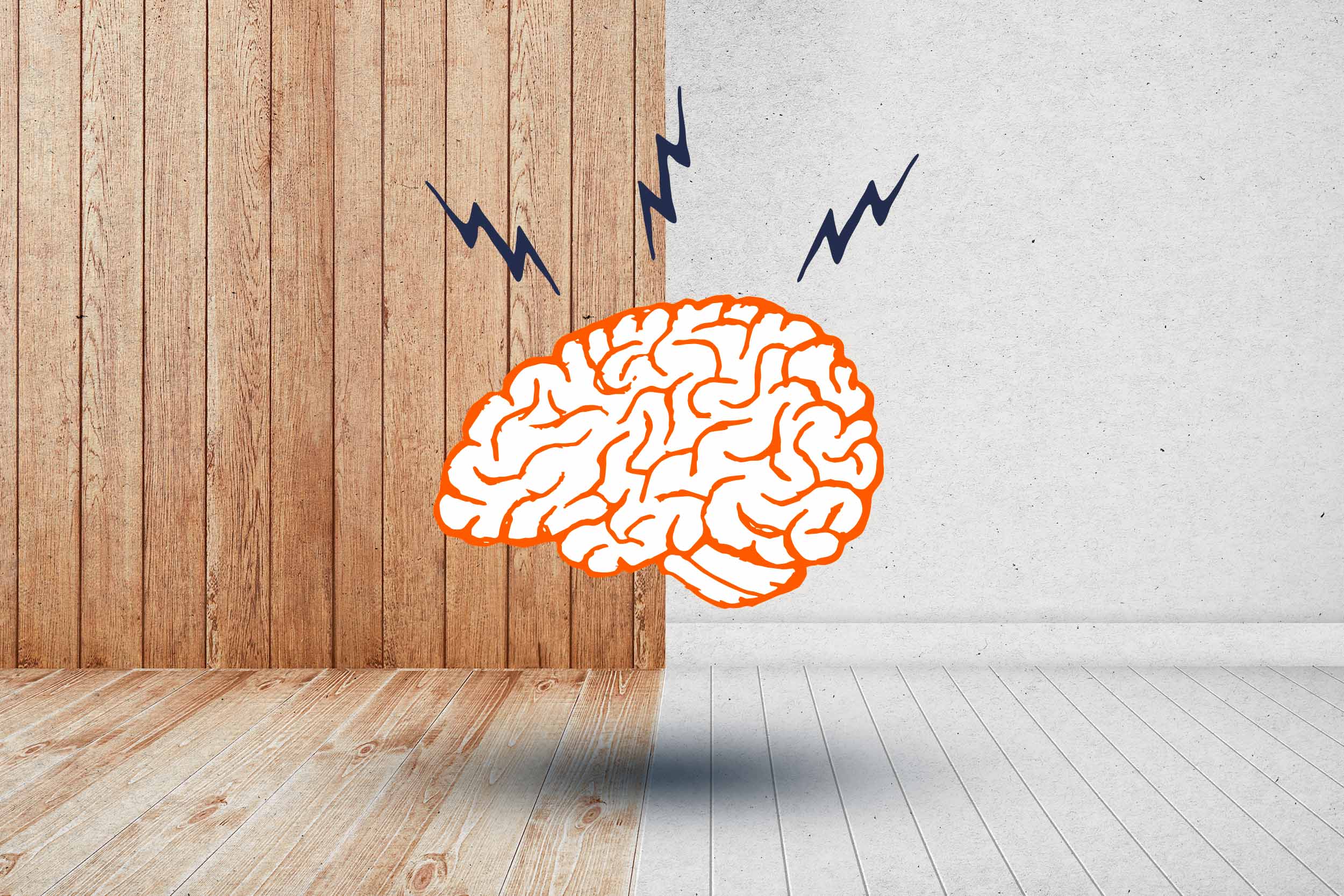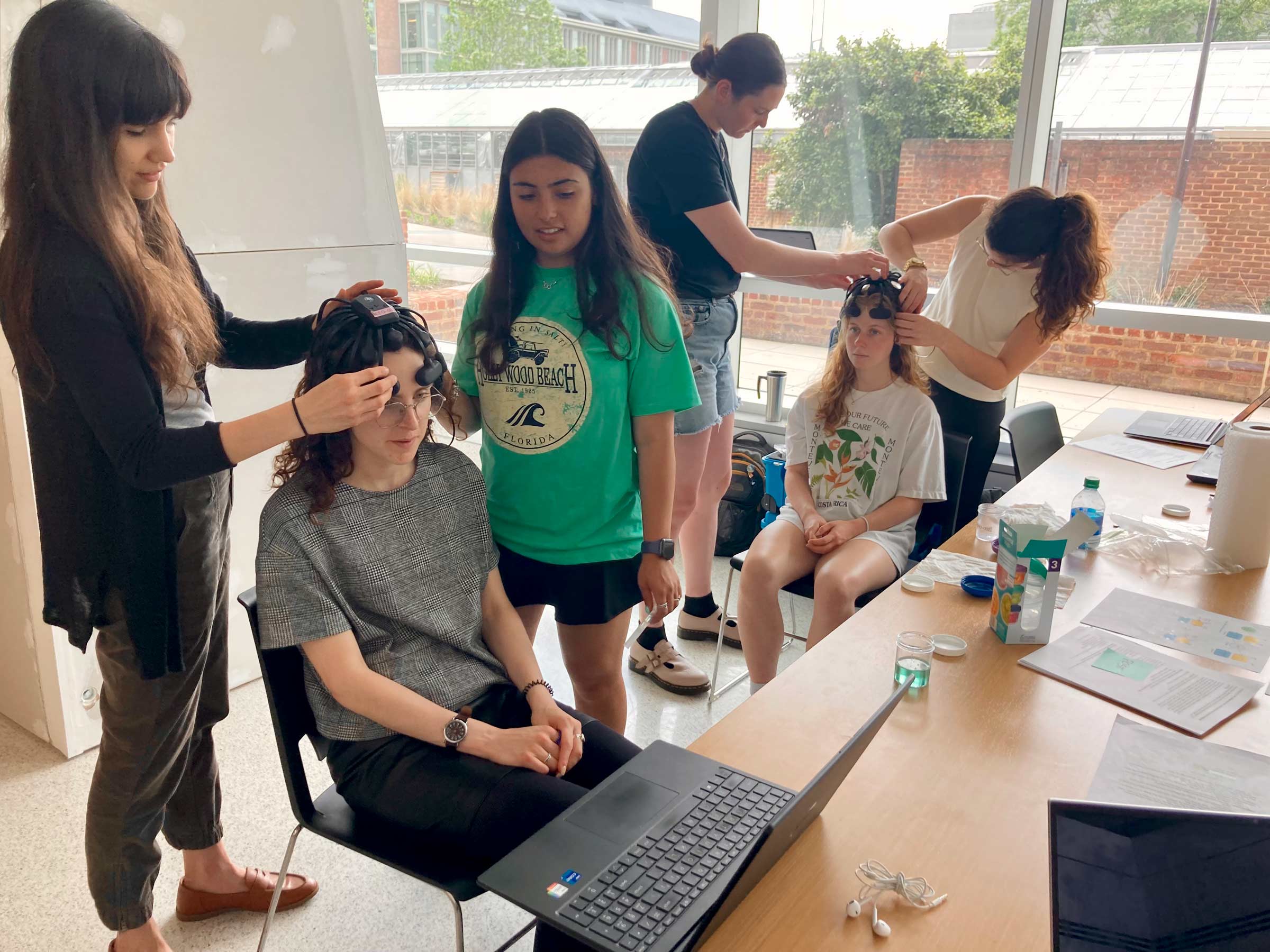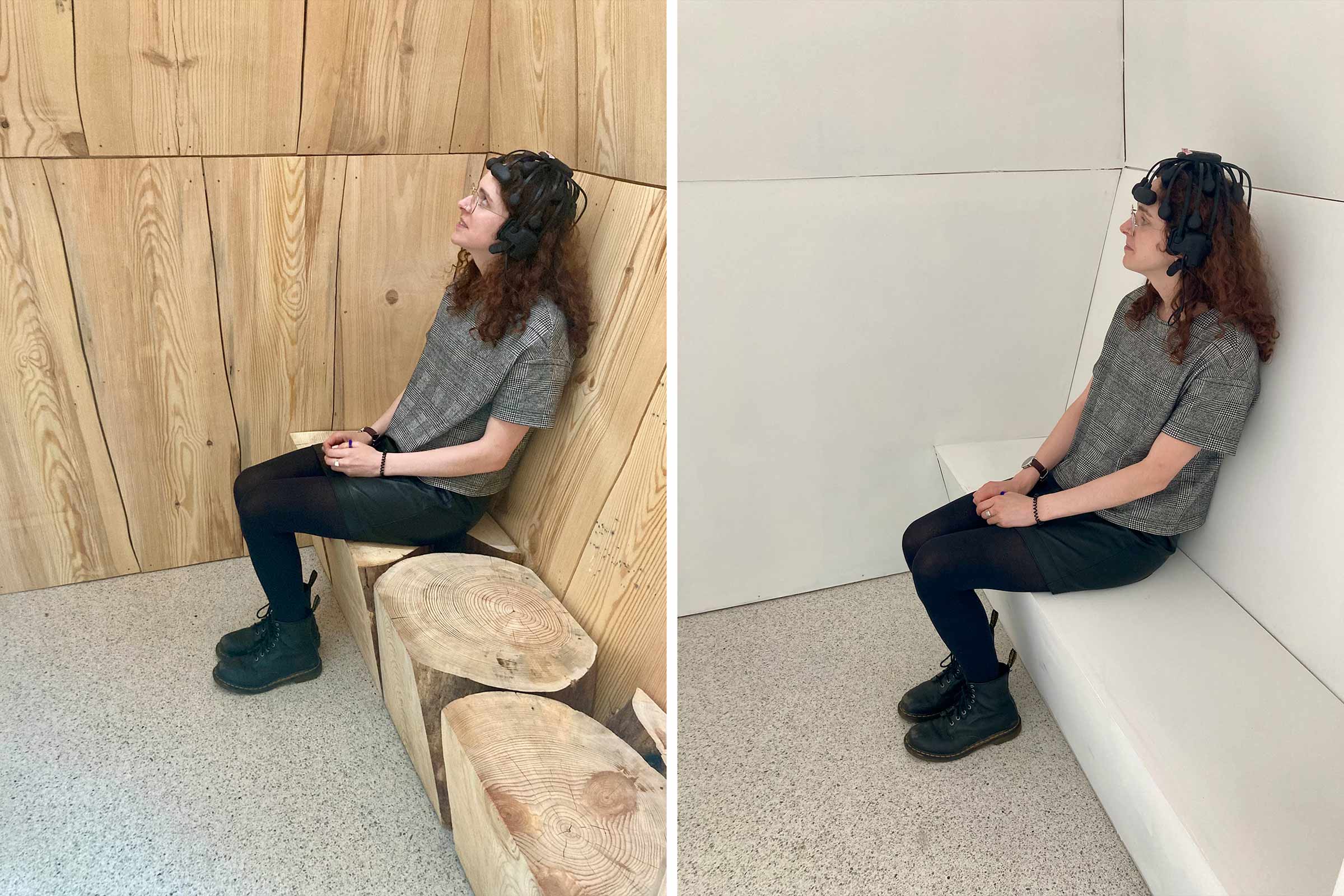“We hypothesized that biophilic forms would foster a stronger connection to nature and would really manifest in people’s mental health and we would see positive changes in both self-reported mental health and wellbeing and in alpha brain wave activity associated with relaxation,” said Jenny Roe, the Mary Irene DeShong Professor of Design and Health/Urban Planning and director of the Center for Design and Health.
Study participant Daniel Langford found both chambers worth visiting.
“In pod 1, I found myself wanting my laptop or iPad to do work. The pod seemed like an ideal space for productivity and isolation,” he said. “In pod 2, I felt a desire to slow down and simply relax. I found myself appreciating the natural wood textures and the scent of freshly cut wood.”
Other researchers on the study team include Kevin Pelphrey, Harrison-Wood Jefferson Scholars Foundation Professor of Neurology; Tanya Evans, assistant professor, School of Education and Human Development; Stefen Beeler-Duden, research associate, Early Social Development Lab; and Analia Marzoratti, doctoral student, School of Education and Human Development.
Preliminary results of the study should be available in early fall.
“If what we hypothesize is actually found, that the natural environment actually does help foster some management of stress, I think implications on Grounds – for UVA Health, the hospital and the cancer center – and beyond is how these types of immersive structures could be used in high-stress settings,” said Roe.
“A lot of students, staff and faculty experience high levels of stress at certain times of the year,” she said. “Maybe spending 10 minutes in a compact structure that didn’t cost a huge amount to build could make a difference.”







